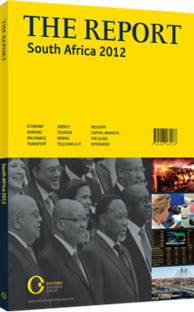A century of service: The ANC’s 100th anniversary has highlighted both successes and continued challenges
On January 8, 2012 the African National Congress (ANC) gathered in Bloemfontein, the capital city of Free State Province, to celebrate its 100th anniversary. Addressing the crowd, which filled the stadium with a noise and colour redolent of the FIFA World Cup events successfully staged there in 2010, President Jacob Zuma announced the fulfilment of an old ANC ambition. “The 1942 ANC conference passed a resolution that the ANC should have a million members by the time it celebrated its centenary. It is my pleasure to announce that we have achieved this goal. The total number of ANC members is 1,027,389 members in good standing,” he told the assembled dignitaries and ANC members’ leagues.
POLITICAL TRADITION: Unsurprisingly, the occasion provoked considerable public discourse concerning the ANC’s role in South African politics. The party has played a central role in the country’s recent history, and is feted for perhaps its single most salient accomplishment: the manner in which the party was able to oversee the dismantling of apartheid and prevent a race war – the possibility of which had been used by some as an argument for retaining the status quo. Since then its stewardship of the nation has resulted in a period of stability which was by no means guaranteed in the early 1990s, when fears of a right-wing coup were not entirely without basis.
The ANC’s success in this regard has been made visible in the nation’s constitution, the staging of three free and fair elections starting with the general election of 1994, which marked the end of apartheid and the beginning of universal adult suffrage, and the presence in the civic sphere of strong institutions free from the taint of executive meddling.
NEW CHALLENGES: However, policy-making has become more complicated in the post-apartheid era, with longer-term fundamental challenges such as black unemployment still afflicting the country, which in turn has begun to spur greater introspection, both by the electorate and by the ANC itself. In the years that have followed the end of apartheid, ANC has played an overwhelmingly dominant role in the governance of the country, regularly garnering well over 60% of the vote in nationwide elections. This allows the party the rare opportunity to implement its agenda without grappling with a more entrenched opposition, but it also brings to the fore internal schisms within the party.
This is exacerbated in part by the umbrella nature of the ANC body, which includes sizeable factions across the political and socioeconomic spectrums. The ANC governs in formal alliance with the Congress of South African Trade Unions and the South African Communist Party, both of which exert their own pressures on internal policy-making.
INTRA-PARTY DIVISIONS: The resulting tensions have sometimes been evident at the very top of the party. The anniversary event, for example, provided an opportunity for the party to heal the wounds of one of its most visible internal division. The handing of a “centenary flame” to President Zuma by Thabo Mbeki, and the subsequent tribute to Mbeki in Zuma’s speech, has been interpreted as conciliatory acts that have brought to an end, at least symbolically, an acrimonious period stretching back to the ousting of Mbeki from power in 2008.
However, while one rift appeared to be successfully mended, another was already forming in its place. Sharing a stage with Zuma, albeit silently, was renegade ANC youth leader Julius Malema, at that time unable to speak publicly as he was fighting his suspension from the party. The popular figure, who has alarmed the party leadership and delighted the left with calls for the nationalisation of the country’s important mining industry, represented a threat to party unity which appears to have been ended with his dismissal from the ANC in February 2012. The ramifications of Malema’s expulsion are yet to be fully seen, but are likely to become apparent and play a larger role in party politics over the course of 2012.
You have reached the limit of premium articles you can view for free.
Choose from the options below to purchase print or digital editions of our Reports. You can also purchase a website subscription giving you unlimited access to all of our Reports online for 12 months.
If you have already purchased this Report or have a website subscription, please login to continue.

